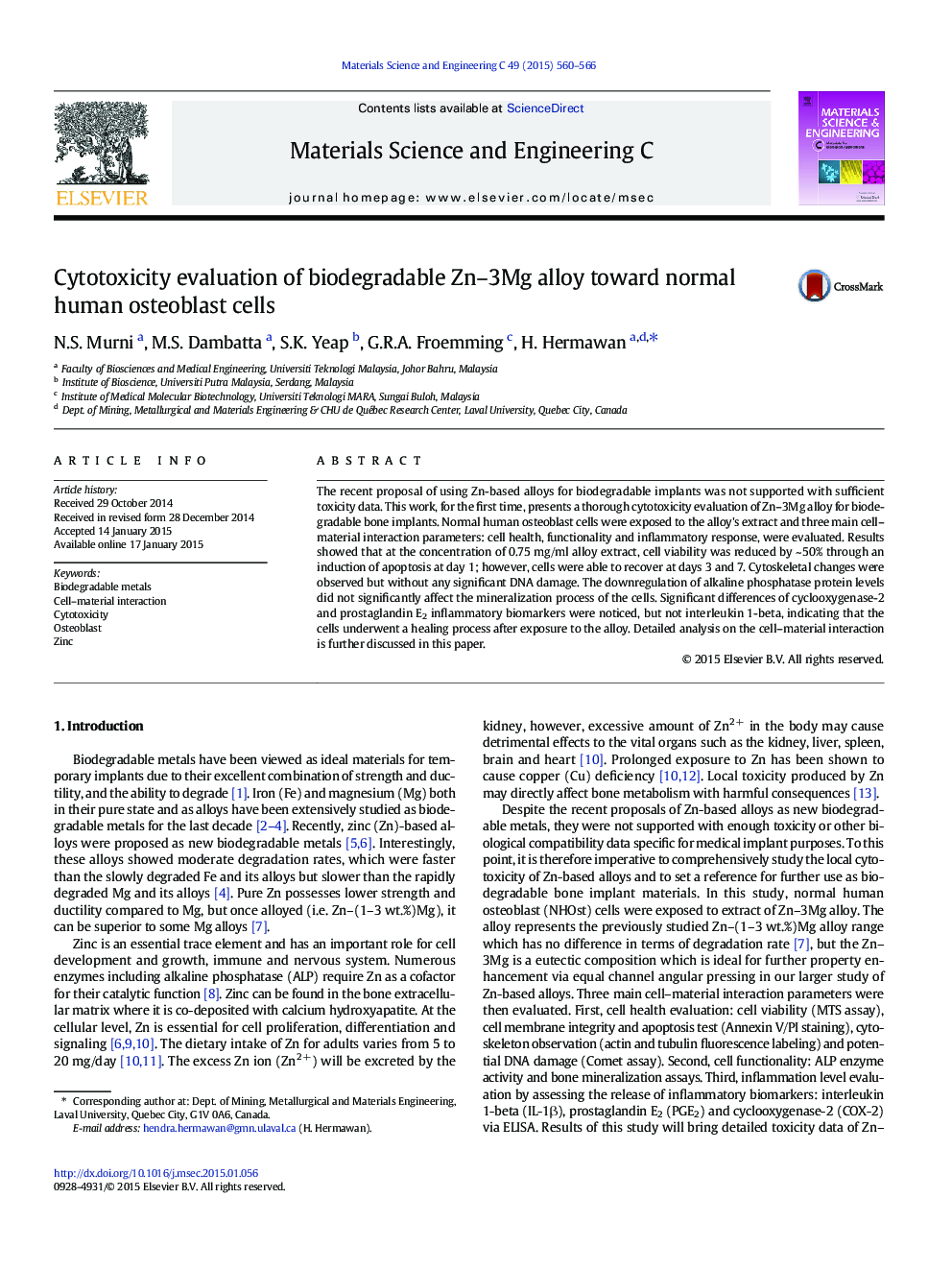| Article ID | Journal | Published Year | Pages | File Type |
|---|---|---|---|---|
| 1428212 | Materials Science and Engineering: C | 2015 | 7 Pages |
•At 0.75 mg/ml Zn–3Mg extract, ~ 50% NHOst cells died through apoptosis at day 1.•Cytoskeletal changes were observed without significant difference in DNA damage.•ALP level disturbance did not significantly affect the mineralization process.•Significant differences of COX-2 and PGE2 inflammation biomarkers were noticed.
The recent proposal of using Zn-based alloys for biodegradable implants was not supported with sufficient toxicity data. This work, for the first time, presents a thorough cytotoxicity evaluation of Zn–3Mg alloy for biodegradable bone implants. Normal human osteoblast cells were exposed to the alloy's extract and three main cell–material interaction parameters: cell health, functionality and inflammatory response, were evaluated. Results showed that at the concentration of 0.75 mg/ml alloy extract, cell viability was reduced by ~ 50% through an induction of apoptosis at day 1; however, cells were able to recover at days 3 and 7. Cytoskeletal changes were observed but without any significant DNA damage. The downregulation of alkaline phosphatase protein levels did not significantly affect the mineralization process of the cells. Significant differences of cyclooxygenase-2 and prostaglandin E2 inflammatory biomarkers were noticed, but not interleukin 1-beta, indicating that the cells underwent a healing process after exposure to the alloy. Detailed analysis on the cell–material interaction is further discussed in this paper.
Graphical abstractFigure optionsDownload full-size imageDownload as PowerPoint slide
